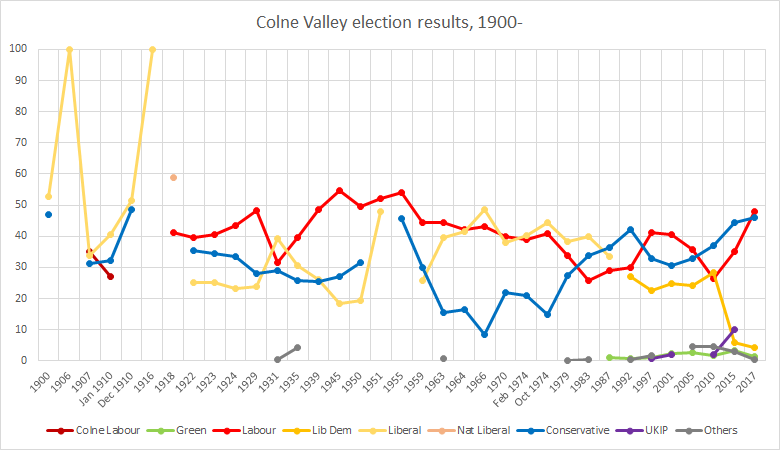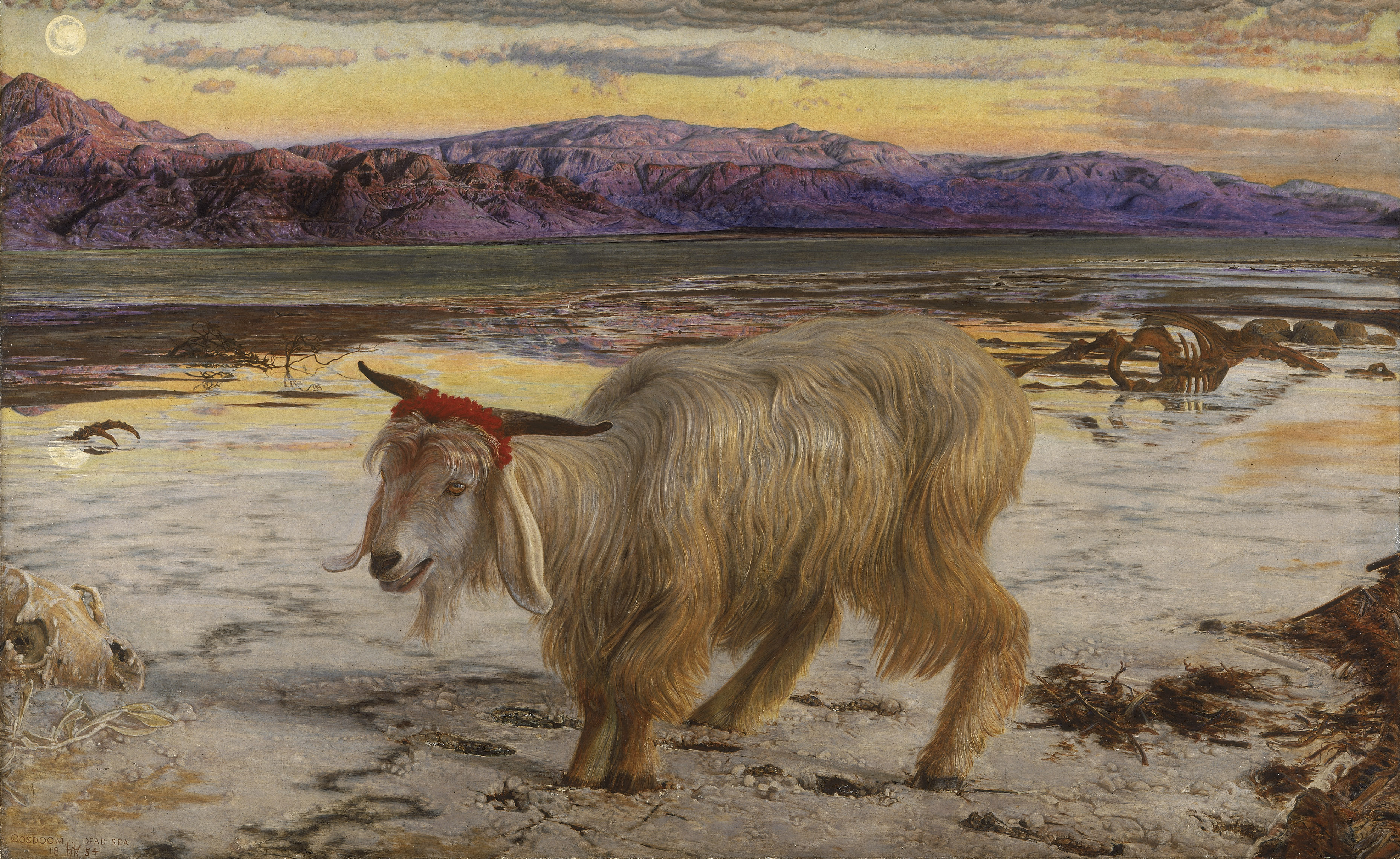|
Scapegoat Hill
Scapegoat Hill is a small village 5 miles (8 km) west of Huddersfield, West Yorkshire, England. It is near to the villages of Slaithwaite and Golcar. The village together with nearby Bolster Moor has a population of 1,246. This Pennine village is 328 metres above sea level at its highest point (near the millennium stone). It is also nearby the Moorside Edge Radio transmitter. The first recorded mention is from 1638 in the records of Huddersfield Parish Church on the death of a child of a William Aneley. At that date, the place was called 'Slipcoat' (or Slippery Coat) Hill. The first record of the name 'Scapegoat Hill' occurs in an Enclosure notice placed in the ''Leeds Mercury'' in 1820. Although the first Ordnance Survey map (of 1843) uses the old name, 'Scapegoat Hill' was in regular use after 1820. The village grew up around the woollen trade, and, in spite of having no mill, continued to grow in size throughout the nineteenth century. In fact, handloom weav ... [...More Info...] [...Related Items...] OR: [Wikipedia] [Google] [Baidu] |
Kirklees
Kirklees is a local government district of West Yorkshire, England, governed by Kirklees Council with the status of a metropolitan borough. The largest town and administrative centre of Kirklees is Huddersfield, and the district also includes Batley, Birstall, West Yorkshire, Birstall, Cleckheaton, Denby Dale, Dewsbury, Heckmondwike, Holmfirth, Kirkburton, Marsden, West Yorkshire, Marsden, Meltham, Mirfield and Slaithwaite. Kirklees had a population of 422,500 in 2011; it is also the third largest metropolitan district in England by List of English districts by area, area size, behind Metropolitan Borough of Doncaster, Doncaster and City of Leeds, Leeds. History The borough was formed on 1 April 1974 by the provisions of the Local Government Act 1972 as part of a reform of local government in England. Eleven former local government districts were Amalgamation (politics), merged: the county boroughs of Huddersfield and Dewsbury, the municipal boroughs of Batley and Spenborough a ... [...More Info...] [...Related Items...] OR: [Wikipedia] [Google] [Baidu] |
West Yorkshire
West Yorkshire is a metropolitan and ceremonial county in the Yorkshire and Humber Region of England. It is an inland and upland county having eastward-draining valleys while taking in the moors of the Pennines. West Yorkshire came into existence as a metropolitan county in 1974 after the reorganisation of the Local Government Act 1972 which saw it formed from a large part of the West Riding of Yorkshire. The county had a recorded population of 2.3 million in the 2011 Census making it the fourth-largest by population in England. The largest towns are Huddersfield, Castleford, Batley, Bingley, Pontefract, Halifax, Brighouse, Keighley, Pudsey, Morley and Dewsbury. The three cities of West Yorkshire are Bradford, Leeds and Wakefield. West Yorkshire consists of five metropolitan boroughs (City of Bradford, Calderdale, Kirklees, City of Leeds and City of Wakefield); it is bordered by the counties of Derbyshire to the south, Greater Manchester to the south-west, Lancash ... [...More Info...] [...Related Items...] OR: [Wikipedia] [Google] [Baidu] |
Colne Valley (UK Parliament Constituency)
Colne Valley is a constituency represented in the House of Commons of the UK Parliament since 2019 by Jason McCartney of the Conservative Party. Constituency profile The seat is named after the Colne; one of three rivers so-named in the UK and one of three main rivers in the seat; its three main towns sit on hillsides and moorland and the local dwellings are mainly stone-built. A sizeable proportion of retirees live in the area, celebrated in the decades-long television comedy ''Last of the Summer Wine'', centred on Holmfirth in the seat. The wider Colne and Holme Valleys still retain some agriculture such as the Longley Farm dairy whose products are sold nationwide. The south-west of the constituency, bordering with Oldham and High Peak, Derbyshire, is within the Peak District and the area includes Marsden Moor Estate. Moving eastwards, the constituency also includes some of Huddersfield's western suburbs such as generally affluent Lindley, and Crosland Moor which is more ... [...More Info...] [...Related Items...] OR: [Wikipedia] [Google] [Baidu] |
Huddersfield
Huddersfield is a market town in the Kirklees district in West Yorkshire, England. It is the administrative centre and largest settlement in the Kirklees district. The town is in the foothills of the Pennines. The River Holme's confluence into the similar-sized Colne to the south of the town centre which then flows into the Calder in the north eastern outskirts of the town. The rivers around the town provided soft water required for textile treatment in large weaving sheds, this made it a prominent mill town with an economic boom in the early part of the Victorian era Industrial Revolution. The town centre has much neoclassical Victorian architecture, one example is which is a Grade I listed building – described by John Betjeman as "the most splendid station façade in England" – and won the Europa Nostra award for architecture. It hosts the University of Huddersfield and three colleges: Greenhead College, Kirklees College and Huddersfield New College. The town ... [...More Info...] [...Related Items...] OR: [Wikipedia] [Google] [Baidu] |
England
England is a country that is part of the United Kingdom. It shares land borders with Wales to its west and Scotland to its north. The Irish Sea lies northwest and the Celtic Sea to the southwest. It is separated from continental Europe by the North Sea to the east and the English Channel to the south. The country covers five-eighths of the island of Great Britain, which lies in the North Atlantic, and includes over 100 smaller islands, such as the Isles of Scilly and the Isle of Wight. The area now called England was first inhabited by modern humans during the Upper Paleolithic period, but takes its name from the Angles, a Germanic tribe deriving its name from the Anglia peninsula, who settled during the 5th and 6th centuries. England became a unified state in the 10th century and has had a significant cultural and legal impact on the wider world since the Age of Discovery, which began during the 15th century. The English language, the Anglican Church, and Engli ... [...More Info...] [...Related Items...] OR: [Wikipedia] [Google] [Baidu] |
Slaithwaite
Slaithwaite , locally ''Slawit'' (Old Norse: Timber-fell clearing), is a village within the Metropolitan Borough of Kirklees, in West Yorkshire, England. Historically part of the West Riding of Yorkshire, it lies in the Colne Valley, lying across the River Colne and the Huddersfield Narrow Canal, approximately south-west of Huddersfield. The village has two primary schools; Slaithwaite Church of England School on Holme Lane and Nields Junior, Infant and Nursery School on Nields Road. There is also a small primary school in the nearby hamlet of Wilberlee. The village is serviced by the local Secondary School, Colne Valley High School in Linthwaite approximately 2.5 miles away. The village was voted the best place to live in the North & Northeast in The Times 2022 Best Places To Live annual guide. History Between 1195 and 1205, Roger de Laci, Constable of Chester, gave the manor of Slaithwaite to Henry Teutonicus (Lord Tyas). It remained in the Tyas family until the end of t ... [...More Info...] [...Related Items...] OR: [Wikipedia] [Google] [Baidu] |
Golcar
Golcar (pronounced 'Go Car' or 'Golker') is a village on a hillside crest above the Colne Valley in West Yorkshire, England, west of Huddersfield, and just north of the River Colne and the Huddersfield Narrow Canal. The 2021 population census lists the village as having 18,725 pemanent residents. . The main transport access is from the A62 (Manchester Road), through Milnsbridge in the valley bottom or via Scapegoat Hill from the A640 (New Hey Road) at the top of the hill. The township of Golcar consists of Bolster Moor, Golcar, Wellhouse, Pole Moor and Scapegoat Hill. History Named after St Guthlac, who preached in the area during the 8th century, its name is recorded in the Domesday Book of 1086 as ''Goullakarres''. During the Industrial Revolution Golcar became an important centre for weaving. Pharmacologist James Burrows grew up in the area. The village has been a site of extensive dialect research. It was first a site in the English Survey of English Dialects, a ... [...More Info...] [...Related Items...] OR: [Wikipedia] [Google] [Baidu] |
Scapegoat Hill Chapel (3941607383)
In the Bible, a scapegoat is one of a pair of kid goats that is released into the wilderness, taking with it all sins and impurities, while the other is sacrificed. The concept first appears in the Book of Leviticus, in which a goat is designated to be cast into the desert to carry away the sins of the community. Practices with some similarities to the scapegoat ritual also appear in Ancient Greece and Ebla. Origins Some scholars have argued that the scapegoat ritual can be traced back to Ebla around 2400 BC, from where it spread throughout the ancient Near East. Etymology The word "scapegoat" is an English translation of the Hebrew ( he, עזאזל), which occurs in Leviticus 16:8: The Brown–Driver–Briggs Hebrew Lexicon gives () as a reduplicative intensive of the stem , "remove", hence , "for entire removal". This reading is supported by the Greek Old Testament translation as "the sender away (of sins)". The lexicographer Gesenius takes to mean "averter", whi ... [...More Info...] [...Related Items...] OR: [Wikipedia] [Google] [Baidu] |
.jpg)

.jpg)


